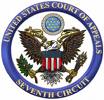 For a resident of Milwaukee, there can be no question about the marquee Seventh Circuit case last week: the court decided the appeals of three of the defendants convicted in the notorious Frank Jude beating. In United States v. Bartlett, the court (per Chief Judge Easterbrook) affirmed the convictions of all three defendants and the sentences of two. However, the Seventh Circuit also vacated the sentence of Jon Bartlett, who will now have to be resentenced in the lower court.
For a resident of Milwaukee, there can be no question about the marquee Seventh Circuit case last week: the court decided the appeals of three of the defendants convicted in the notorious Frank Jude beating. In United States v. Bartlett, the court (per Chief Judge Easterbrook) affirmed the convictions of all three defendants and the sentences of two. However, the Seventh Circuit also vacated the sentence of Jon Bartlett, who will now have to be resentenced in the lower court.
As everyone living in the Milwaukee area knows, Bartlett and his codefendants were police officers convicted of civil rights violations for the savage beating suffered by Jude, a biracial man. For many, the Jude case, which received intense local media coverage, was emblematic of the state of police-community relations in inner-city Milwaukee.
Bartlett’s “win” on appeal resulted from a discrepancy in his sentencing.
The federal sentencing guidelines recommended a sentence within the range of 151-188 months for Bartlett. The sentencing judge announced that Barrtlett’s sentence would be at the top of the range, but then imposed a sentence of 208 months. The Seventh Circuit appropriately decided that Bartlett’s sentence could not stand when there was a risk it resulted from a misreading of the guidelines:
A 208-month sentence is reasonable substantively, but no one, not even a Bartlett, should lose 20 months of freedom because a district judge read across the wrong line in a table. (The range 168 to 210 months is the next highest in the Guidelines’ sentencing table.)
Of course, by stating that the 208-month was “reasonable substantively,” the Seventh Circuit has cleared the way for the lower court simply to reimpose the same sentence. Bartlett’s victory may be short-lived.
Aside from the bottom-line result, a couple of other aspects of the opinion deserve note. First, the Seventh Circuit upheld the lower court’s decision to exclude the defendant’s proposed expert testimony on the high error rates in eyewitness identification. Along the way, though, the Seventh Circuit acknowledged the compelling social scientific evidence demonstrating the problems with eyewitness identification of strangers. The court also indicated that expert testimony on these problems might be appropriate in some cases: “Expert evidence can help jurors evaluate whether their beliefs about the reliability of eyewitness testimony are correct.” However, in the Jude case, such expert evidence was not improperly excluded because the convictions did not rest on a single eyewitness identification of a stranger, but on multiple identifications, some of which were made by witnesses who knew the defendant.
Second, the court tried to sort out the messy case law on when a defendant must object to a sentence in the lower court in order to preserve the right to raise a sentencing issue on appeal. (The government argued that Bartlett had forfeited his sentencing claim.) The need to raise an issue in the lower court is governed by Rule 51:
Rule 51(b) . . . requires a protest immediately after the ruling if the litigant did not have an opportunity to argue the point earlier. . . . But when an issue is argued before the judicial ruling, counsel need not take exception once the court’s decision has been announced. That’s what Rule 51(a) says. Bartlett’s sentence was the subject of extensive argument and evidence; his lawyer did not need to argue with the judge once the sentence had been pronounced.
Other criminal cases with new opinions last week were:
United States v. Longstreet (Nos. 07-1657, 07-2685, 07-3083) (Kanne, J.) (affirming conviction and sentences arising from drug conspiracy, with limited remand for possible resentencing in light of Kimbrough).
United States v. Kincannon (No. 08-2891) (Evans, J.) (affirming conviction and sentence in drug case).
United States v. Lacey (No. 08-2515) (Manion, J.) (affirming conviction and sentence in child pornography possession case).
